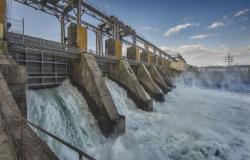On a local level, market risk remains at a high level, with a tendency to stagnate, against the background of contagion and interconnections, financial markets reacting promptly to the materialization of any tensions and risk factors, although the tightening of financial conditions together with the geopolitical situation have a high influence on them, according to the information published by the Financial Supervision Authority (ASF) in the stability report of the non-banking financial markets.
All other risks (credit, liquidity, solvency, profitability and operational) are assessed as being at a medium to high level, with increasing or stagnating tendencies. At the same time, the increase in systemic risk for the Romanian economy is explained in a large proportion of exogenous risks. The capital market in Romania is sensitive to the same regional risk factors that influence stock market returns in Austria, Poland, Hungary, Bulgaria, capital markets important from the point of view of capitalization acting by transmitting volatility to less interconnected and more capital markets small in terms of capitalization,” according to the report.
From the perspective of the insurance market, the increase in the inflation rate has a negative impact from two perspectives: on the one hand, the increase in acquisition and administration expenses and the value of claims causes an increase in costs for insurers, and on the other hand, the decrease in the purchasing power of the population as a result of the generalized increase in prices, it can cause a contraction in demand.
“Insurance companies are exposed to two potential risks: increasing costs and a potential decrease in revenues. However, at the local level, the insurance market remains dominated by the compulsory car insurance segment, which reduces the risk of a significant decrease in insurers’ income. The exposure of Romanian insurance companies to government bonds remains significant, maintaining the risk generated by the sudden increase in government yields with an impact on the market value of government securities in the insurers’ portfolios,” the stability report also states.
The decrease in the inflationary advance during 2023 had a positive influence on the financial markets, they recovering part of the depreciation suffered previously. Furthermore, the prospects for financial stability at the European level remain fragile, adverse market dynamics may create and propagate new shocks, accompanied by pressures on liquidity. The private pension funds in Romania recorded important increases in assets in 2023, at the moment the system is still in an accumulation stage, with no pressure to sell, as the level of payments is very low.
During 2023, payments were made in Pillar II in the amount of 919 million lei (0.73% of total assets as of the end of December), respectively 113 million lei in Pillar III (2.38% of total assets) . The liquidity risk is also at a low level, a percentage of 1.14% of the assets of the entire system being held in current accounts and short-term deposits (approx. 1.5 billion lei). The investment policy within the portfolios of private pension funds continues to be focused on the local financial market (approximately 93% of assets with Romanian issuers), oriented especially in fixed income instruments (73%) and shares (23%).
At the end of December 2023, private pension funds had investments worth 17.07 billion lei in a number of 14 issuers of shares with an ESG score, representing 55.5% of the total investments in shares, respectively 13% of assets total.
The European Central Bank carried out the second climate risk stress test, which completed the climate stress test for the ECB’s banking supervision, which targeted the risks to banks, by expanding the scope, also analyzing companies and households, the exercise with the objective of testing the resistance of companies, households and banks in three transition scenarios: accelerated transition, late-push transition and delayed transition. The results showed that the delay in the transition and the total lack of action are more costly in the long term compared to a faster transition which, although it would initially involve higher costs with investments and energy, in the medium term the financial risks would decrease, the investments in renewable energy amortizing – faster and, ultimately, reducing energy costs. In the context of the increased interest in ESG investments, the risks generated by ecological misinformation also increase.
In addition to the losses caused to individual investors, environmental misinformation can have profound consequences for the entire investor community’s confidence in the effectiveness of sustainability disclosure regimes, with negative knock-on effects on the financing needed to transition to a more sustainable economy, the report added. of stability published by ASF.
From the perspective of the effects of climate change, a global increase in the frequency and severity of natural disasters has been observed in recent years. The impact of such developments is significant for insurance companies, as a result of the increase over time in the value of claims paid for natural catastrophe events related to weather/climate. As far as Romania is concerned, the World Bank confirms in the Country Report on Climate and Development the vulnerability to natural disasters caused by climate change. Floods and drought are the main categories of natural disasters identified by the World Bank to which the country is exposed, potentially generating significant macro-financial risks. Considering the low level of coverage in insurance in Romania, it is also necessary to increase the level of awareness of the population regarding the risks arising from climate changes and the potential losses generated by them. Natural catastrophe insurance is a key tool for mitigating losses from extreme climate-related events, providing financing to households and businesses should these risks materialize.
For other news, analyses, articles and business information in real time, follow Ziarul Financiar on WhatsApp Channels
Tags: local level market risk remains high level tendency to ..
-





